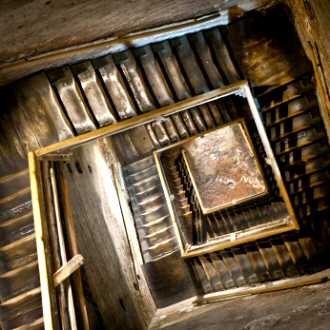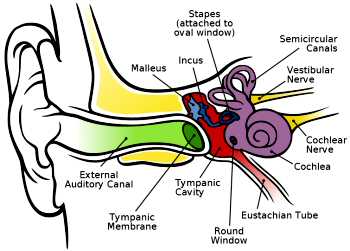The Haven
Healing Centre
The Orchard
Draycott Rd, Cheddar
Somerset

The Haven |

|
| Natural Complementary Therapies - your key to improved health and well-being | |
|
Home About Contact Gift Solutions Articles Treatments Products Page: 1 2 3 4 5 Appointments |
Benign Paroxysmal Positional Vertigo (BPPV)A super treatment for BPPV that often works with just ONE GO! Benign Paroxysmal Positional Vertigo (BPPV) is the result of head movement in certain directions which causes short, but intense, episodes of veritigo, or dizziness. The good news is that although the symptoms of BPPV are very unpleasant, it is not considered a life threatening condition, hence the term 'benign'. The 'paroxysmal' part means a sudden recurrence, severe attack or a sudden increase in intensity. 'Positional' just means that the symptoms are triggered in certain positions, and 'vertigo' is the dizziness with a spinning sensation, which makes you feel unsteady like everything is moving around you. In conversation, it is often referred to simply as, Benign Positional Vertigo or BPV.
Benign Paroxysmal Positional Vertigo (BPPV) is the result of head movement in certain directions which causes short, but intense, episodes of veritigo, or dizziness. The good news is that although the symptoms of BPPV are very unpleasant, it is not considered a life threatening condition, hence the term 'benign'. The 'paroxysmal' part means a sudden recurrence, severe attack or a sudden increase in intensity. 'Positional' just means that the symptoms are triggered in certain positions, and 'vertigo' is the dizziness with a spinning sensation, which makes you feel unsteady like everything is moving around you. In conversation, it is often referred to simply as, Benign Positional Vertigo or BPV.What is happening in my ears? The inner ear has a balance organ made up of the vestibule and 3 semicircular canals, plus the cochlea which allows you to hear. The semicircular canals are arranged at right angles to each other, and sense movement in your head in three planes (left-right, up-down and forward-backward), helping you control your balance and posture. The balance organ is filled with fluid, and on movement of the head, currents are produced in the fluid. The semicircular canals sense any rotational movement of the head by detecting currents produced in this fluid with tiny hair receptors that line the labyrinth of pipe. Nerve messages are transmitted through the balance nerve to the brain. Similarly, in the vestibule, sensitive hair cells overlaid by crystals of calcium carbonate called otoliths help detect linear movement of the head. In BPPV, these crystalline otoliths are displaced into the semicircular canal as tiny, but solid fragments (called otoconia), that break away from the inner lining of the vestibule. The motion of these crystals in the ear canal inappropriately stimulates the tiny nerve receptors of the balance organs, by brushing against them and sending multiple erroneous signals down the vestibular nerve, that conflict with the clear signals of the opposite unaffected canal. The brain can't make sense of the conflicting signals and the confusion causes vertigo. Traumatic or idiopathic benign paroxysmal positional vertigo; what's the difference? Traumatic benign paroxysmal positional vertigo (t-BPPV) can be caused by a variety of accidents, including, but not limited too, car accidents, boxing (and other sports), whiplash, infection, falls and impact. Idiopathic benign paroxysmal positional vertigo (i-BPPV) can arise spontaneously or from an obscure or unknown cause, and is often just regarded as age related. Research shows that t-BPPV is more difficult to treat than i-BPPV, and also has a greater tendency to recur. Is there a test for benign paroxysmal positional vertigo? Yes, you'll quite likely have a test at your doctors surgery, called the Dix-Hallpike manoeuvre. You'll just be asked to sit on the couch and lie back so that your head overhangs the end of the couch and move your head in certain directions. Your doctor may assist so that you don't strain your neck. An episode of vertigo is confirmation of BPPV. What treatments are available? Well, doctors being doctors, bless 'em, will write you a nice prescription for prochlorperazine or an antihistamine, to control the dizziness, nausea and vomiting.  Other than that, you can opt to wait for a few weeks or months, in which time, it may well have righted itself and gone away. The average is around 10 weeks.
Other than that, you can opt to wait for a few weeks or months, in which time, it may well have righted itself and gone away. The average is around 10 weeks.It is thought the otoconia either dissolve or move back into the vestibule and away from the canals spontaneously. For those in which it returns, this is either wrong, or new fragments break away and start the process over again. For some people, symptoms persist for months or years and defy treatment. This is when I think the Epley manoeuvre should be tried as a matter of some urgency. I always suggest that you consult with your GP before proceeding just in case they have a good reason for you not to proceed. But normally, there is no reason for you not to continue and most enlightened doctors will be happy that you are looking for ways to help yourself. So that's what we will do here at The Haven practice. The Epley Manoeuvre, then if necessary, followed up by something called Brandt-Daroff exercises, which I will teach you and you can do yourself at home. Normally, your only committment is to avoid bending over for for a while, to pick up items of the floor or tie your shoes, to always get up out of bed, or a chair slowly, and to avoid jobs that involve looking up, like painting a ceiling, for a week or two. What does the Epley Manoeuvre consist of? The idea is to use gravity to allow the otoconia to move out of the canals and back into the vestibule. This is achieved by placing your body and head in a series of specific positions for a set amount of time, to allow the crystals to fall through the labyrinth fluids and to settle away from the nerve endings. When done in the right order, the risk of the crystals falling back into the canal is largely negated, and in about 80% of cases, this is achieved in only one treatment. The few patients who don't get full reduction on the first treatment, can be treated again shortly afterwards. If for any reason symptoms return at a later date, even months or years, the manoeuvre can be repeated with a high probablilty of success. Normally, one session is all it will take. At least that's been my experience so far. There is no guarantee that you will have the same result as other people, but if it takes two or three attempts, is that really bad? Not really, it just took longer. Normally though, you will be able to see instant results as they occur in real time. If this idea resonates with you, I invite you to visit The Haven Healing Centre in Cheddar for a treatment or two. See here for appointments and a treatment price list. I look forward to welcoming you soon. Phil. Please share this page with your friends. Thank you.
Note: DISCLAIMER: This information is not presented by a medical practitioner and is for educational and informational purposes only. The content is not intended to be a substitute for professional medical advice, diagnosis, or treatment. Always seek the advice of your physician or other qualified health provider with any questions you may have regarding a medical condition. Never disregard professional medical advice or delay in seeking it because of something you have read. It's a small investment in yourself, but could be a life-changing experience you will cherish forever. |
| Copyright © Philip Chave 2010- TheHavenHealingCentre.co.uk All rights reserved. Email: privacy |